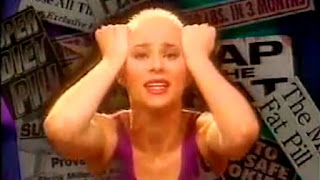Getting MAD, Stopping the Insanity
I recently heard an interview with Dr. Jason Fung, author of The Obesity Code, in which he explained that people trying to lose weight should avoid orange juice because of its high sugar content.
"But wait," the interviewer interrupted. "What about vitamin C?"
"Are you suffering from scurvy?" Fung fired back. "If you’re malnourished, then yes, by all means drink the orange juice. But if you’re trying to lose weight, juice is not your friend." The question we often lose sight of, he went on to say, is this one: "What problem are you trying to solve?"
I love this question. Like Ernest Hemingway’s famous "bullshit detector," it has the power to help us navigate the muddy, manure-rich field of nutrition today. We are constantly getting ideas and advice thrown at us, and it often conflicts with the advice we got yesterday. Eat coconut oil, don’t eat coconut oil. Drink coffee, don’t drink coffee. It’s maddening, and it undermines our best attempts to be healthy.
 |
| Infomercial goddess Susan Powter, seen here trying to keep her buzz cut from exploding. |
We should all be eating Acai berries from the Brazilian rainforest because they are packed with antioxidants. Why? Am I suffering from a lack of antioxidants? Red wine has resveratrol. Ok, but am I resveratrol-deficient? See? Fung’s question is like an Occam’s razor for the diet. It cuts right through the bullshit and helps you to find the simplest answer for you.
And this is where we get back to Epilepsy. When I learned that there was a diet that has been proven to help control seizures, I stopped thinking about weight loss and started thinking about that instead.
So what is the magical, bacon-weenie-filled diet that Dr. C and Bobbie put me on? It’s called the Modified Atkins Diet (MAD), and it’s essentially a stricter form of the popular diet invented by Dr. Robert Atkins back in the 70s. It’s low-carbohydrate, moderate-protein, and high-fat.
Most Americans get about half their calories from carbohydrates (which includes everything from veggies, to fruits, to breads and cereals, to ice cream). In the MAD, that’s flipped on its head. You cut way back on carbs, and make fats your main fuel source.
What does this look like in practice? Meat and vegetables, mostly. My dinner is a piece of meat (usually steak, pork, chicken, or fish) with a side of veggies sautéed in olive oil or butter. Lunch is a big salad of mixed greens, olives, crumbled feta, and leftover meat from the night before, topped with homemade oil & vinegar dressing. Breakfast is either bacon and eggs or, more often, coffee with heavy cream. Snacks are nuts (macadamias, preferably) or cheese and salami. Beverages are water. (Oh, and the occasional booze). It's really simple, actually, and it's more than enough food.
At this point, you may be wondering...
But aren’t you worried about cholesterol? No. Cholesterol isn’t the problem I’m trying to solve. Epilepsy is.
But, isn’t it boring? A bit, but entertainment isn’t the problem I’m trying to solve.
But, but... isn’t eating meat bad for the environment? No, actually, but again, global warming isn’t the problem I’m trying to solve.
See how well it works? With that one sentence from Jason Fung, my whole perspective on diet and health has shifted. I advise you to give it a try next time you read about some “superfood” or supplement (I’m sure a new one will come around in the next 15 minutes) or the next time the evening news wants to give you some advice. You'll be surprised at how easy it is to take it or leave it.




Comments
Post a Comment